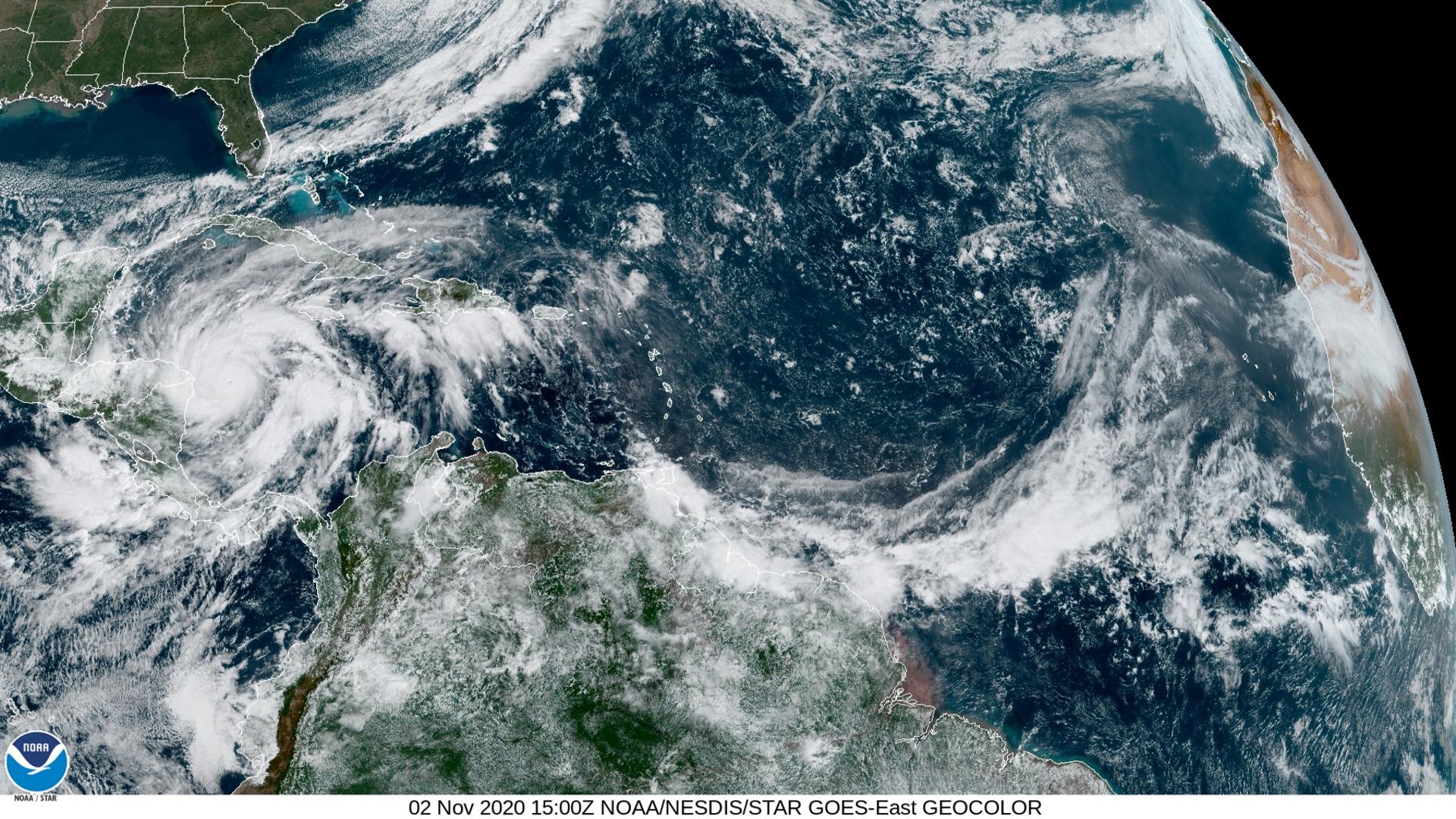Hurricane Eta has erupted quickly into a potentially catastrophic major hurricane as it heads for Central America, where forecasters warn of massive flooding and landslides across a vulnerable region.
Eta was a Category 4 storm with maximum sustained winds of 240 kph (150 mph), late on Monday, the US National Hurricane Center said. It was centred about 75 kilometres (45 miles) east of Puerto Cabezas, Nicaragua, and moving west-southwest.
The centre said Eta was likely to strengthen further and could reach Category 5 before running ashore by early on Tuesday in Nicaragua, where it could bring rains measured in feet rather than inches.
READ MORE: Tropical Storm Eta ties record, expected to become hurricane
Forecasters said central and northern Nicaragua into much of Honduras could get 15 to 25 inches (380 to 635 millimetres) of rain, with 35 inches (890 millimetres) in isolated areas. Heavy rains also were likely in eastern Guatemala, southern Belize and Jamaica.
Storm surge up to 15 feet (4.5 metres) above normal tides was possible for the coast of Nicaragua.
Nicaragua’s navy carried families in open boats, mostly women and children with the possessions they could carry from outer islands to the mainland under a low grey sky.
It prohibited the launching any boats along the stretch of coastline expected to receive Eta.
READ MORE: Hurricane Zeta threatens Mexico’s Caribbean coast
Offshore residents were taken to shelters in Bilwi, also known as Puerto Cabezas, the primary city of the Northern Caribbean Autonomous Region that is home to some 66,000 people, according to Guillermo González, director of the Nicaragua’s national emergency management agency.
A National Hurricane Center archive report says more than 9,000 people died as Mitch’s rains caused widespread flooding during a weeklong slog across the region. At one point its winds reached nearly 285 kph (180 mph), though it weakened while meandering off the Honduran coast before making landfall on October 29, 1998.
In Honduras, much of the country was placed on red alert for Eta’s eventual passage through the country. It had been raining since Sunday in some areas.
Julissa Mercado, spokeswoman for the national emergency management agency, said firefighters had started evacuating areas most at risk and mandatory evacuations would be ordered soon.
Hurricane season still has a month to go, ending November 30. And in 2005, Zeta formed toward the end of December.










Discussion about this post